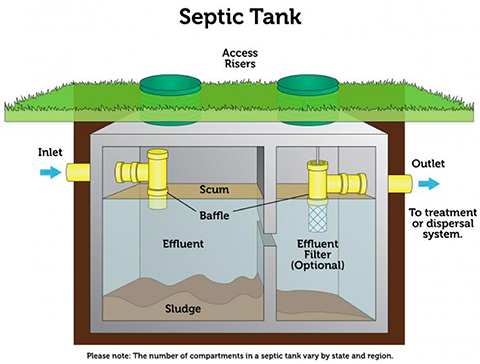Water Quality Planning
Septic Systems
Septic tank systems are an efficient form of sewage treatment for homeowners. A septic tank is a buried, water-tight container. Its job is to hold the wastewater long enough to allow solids to settle down to the bottom forming sludge, while oil and grease float to the top as scum (i.e., dirt or froth on the surface of the liquid). The water is then released into the soil which acts as another filter, straining bacteria, viruses, and nutrients out of the water before it enters into groundwater and local streams.
Learn more about what the EPA states about septic systems.
Source: EPA
Septic System Maintenance
The reliability of your septic tank is determined by its maintenance. The EPA has listed improperly maintained and failing septic systems as one of the top five pollutants for surface water quality. The sludge found in septic tanks contains high levels of nutrients nitrogen and phosphorous, in addition to other pollutants. A poorly maintained septic system will release high amounts of nutrients in drainage water. These nutrients can cause algal blooms that are toxic to humans and wildlife.
The EPA states that septic tanks should be pumped every 3-5 years. Having your septic tank pumped protects your health, local water quality, and your septic tanks' operation.
Information about Septic Systems.
Learn more about septic systems? Watch the Middle James Roundtable's 'A Septic Story.'



